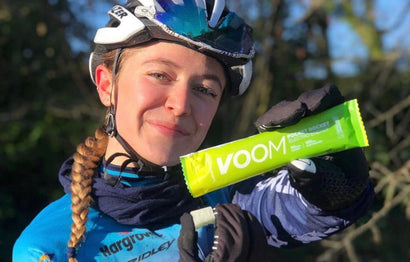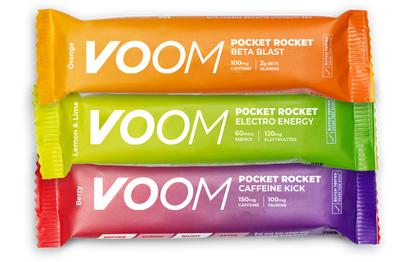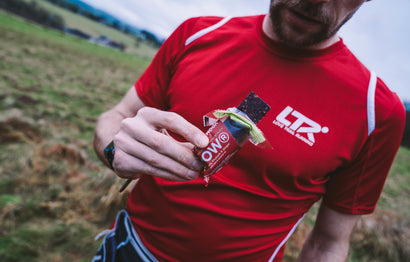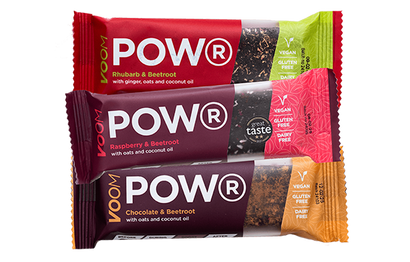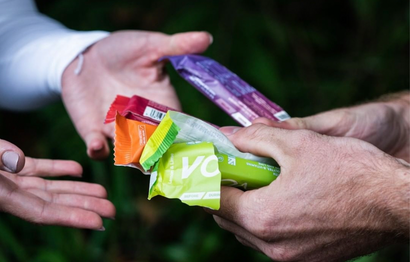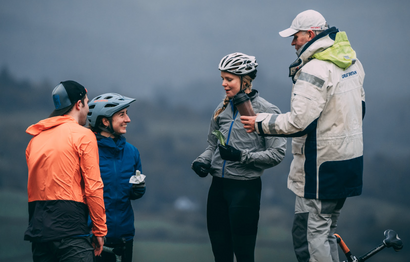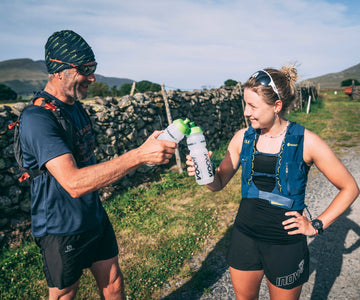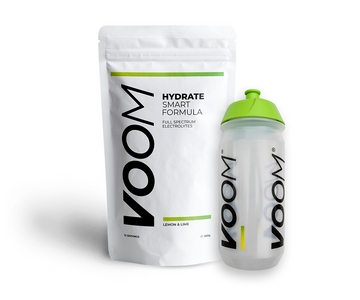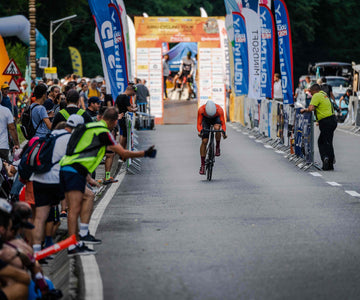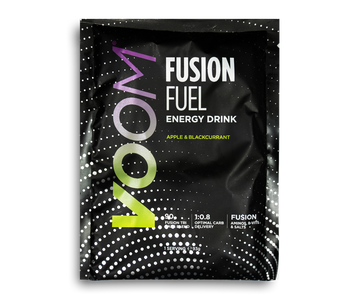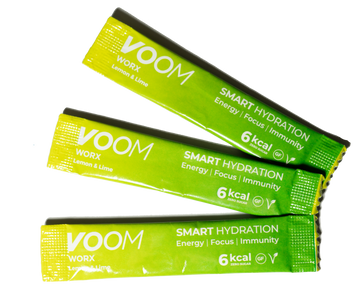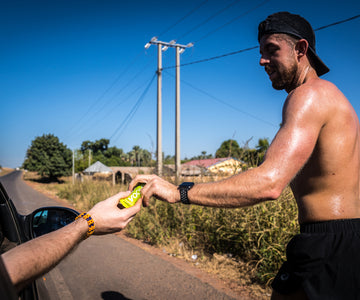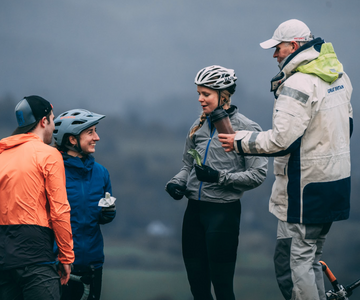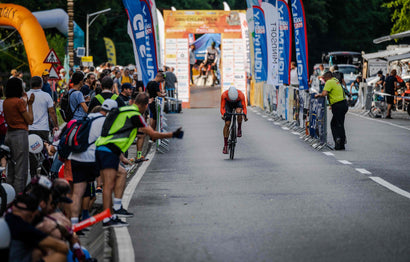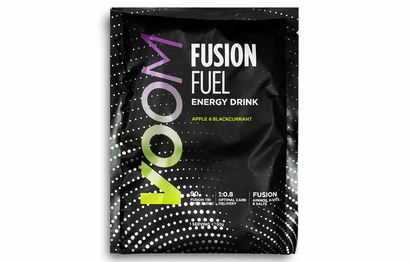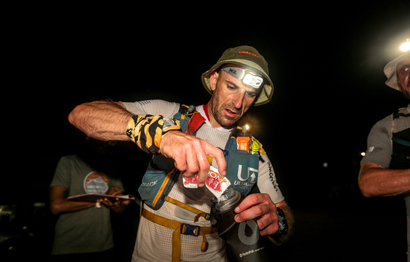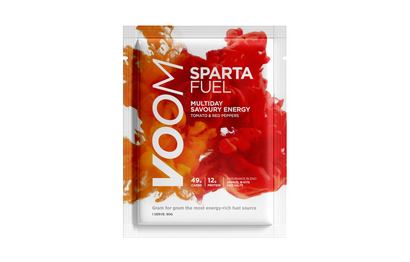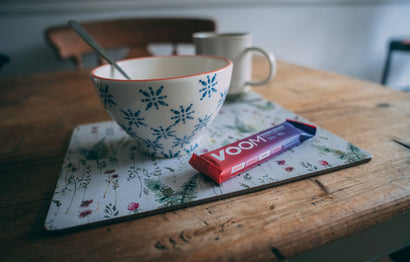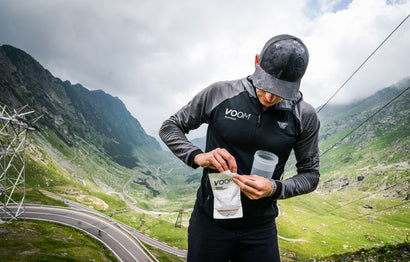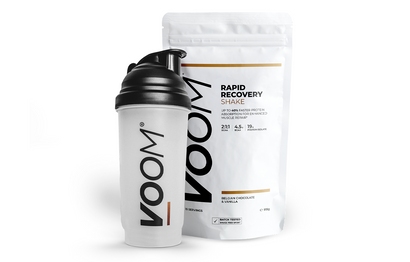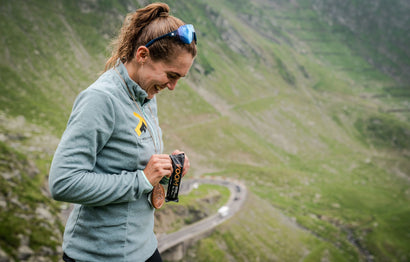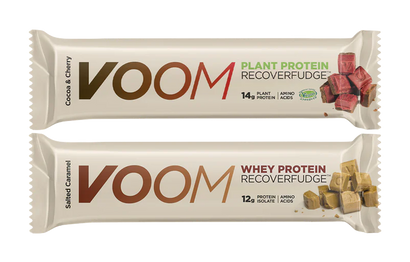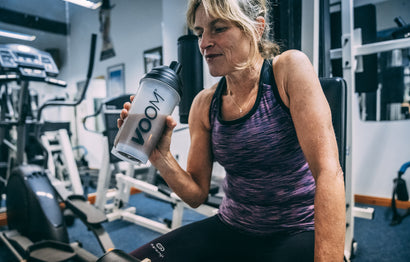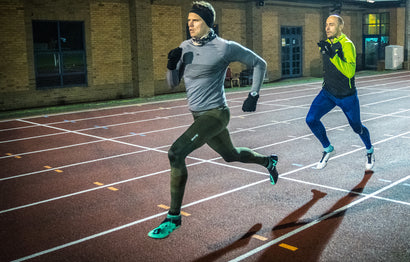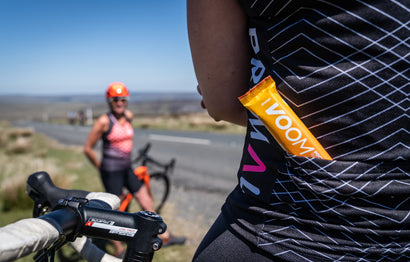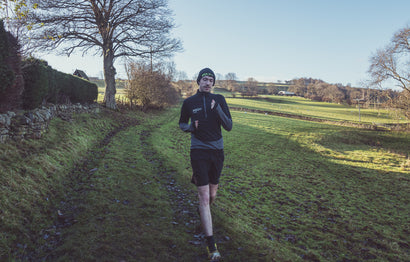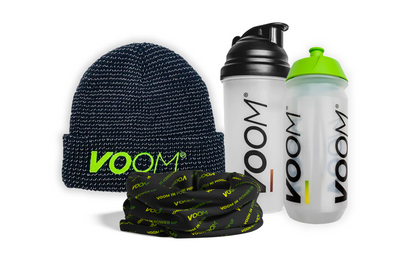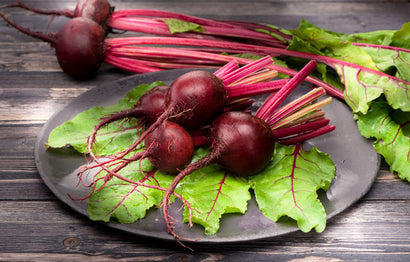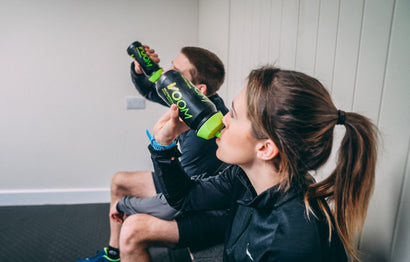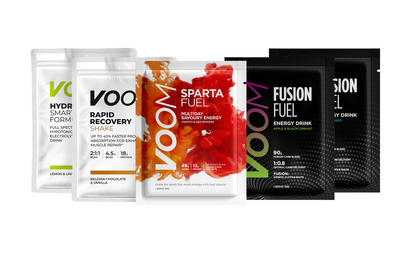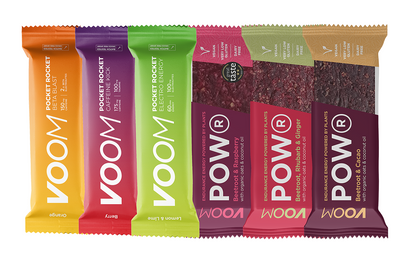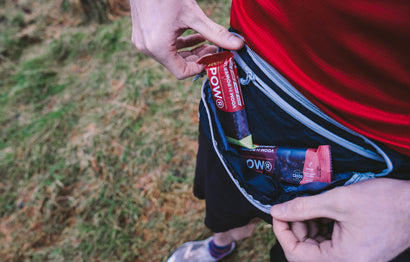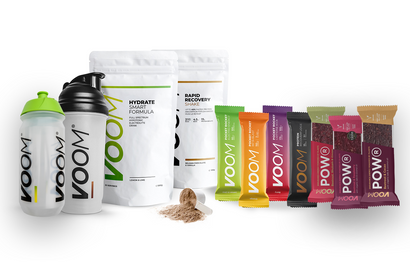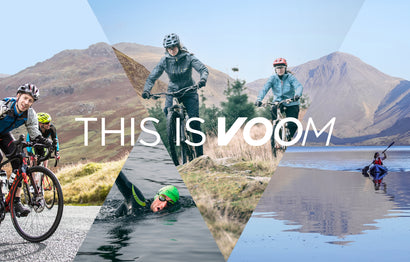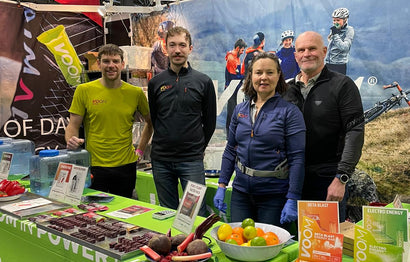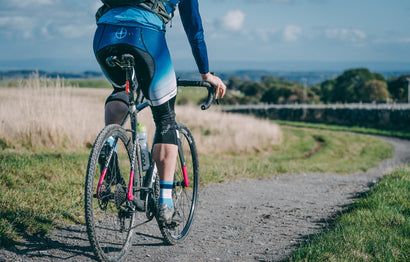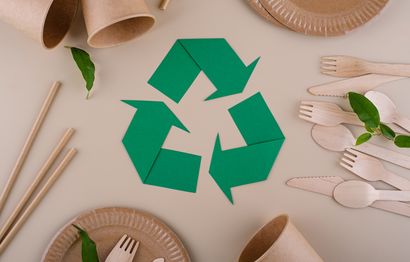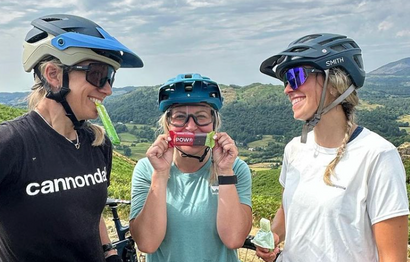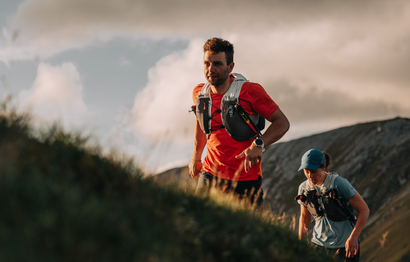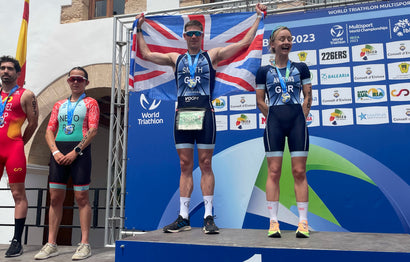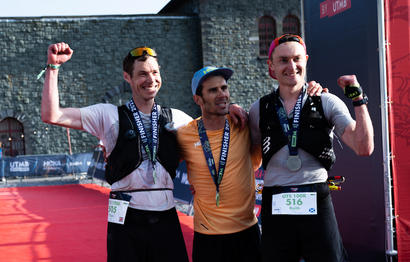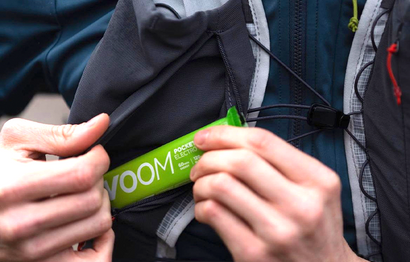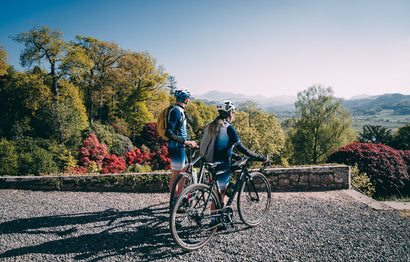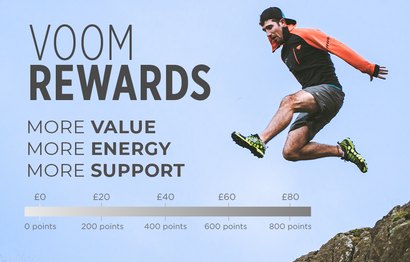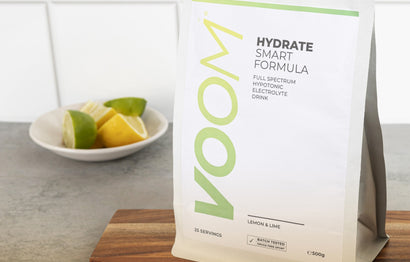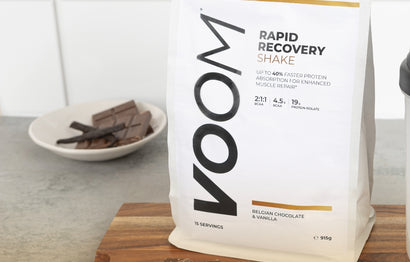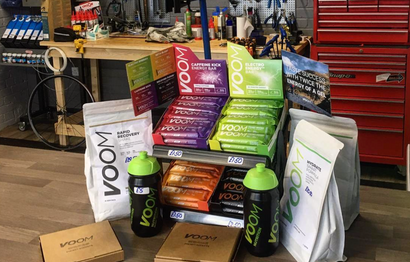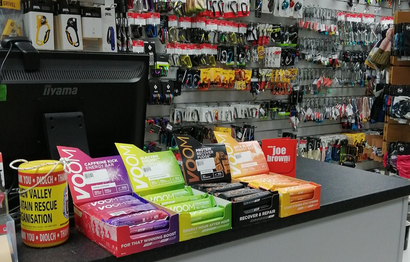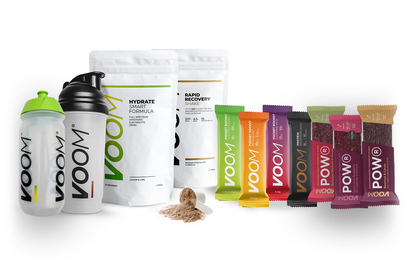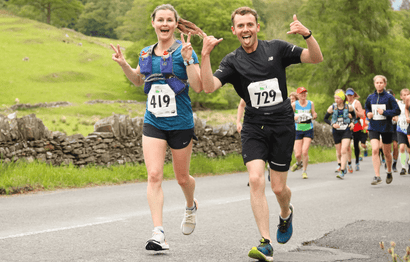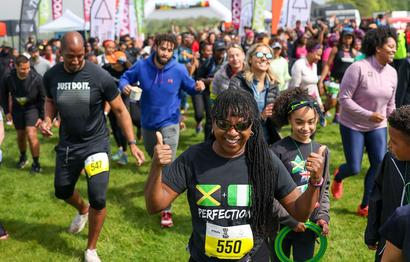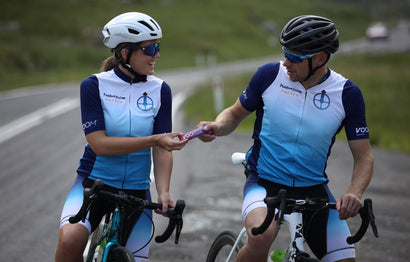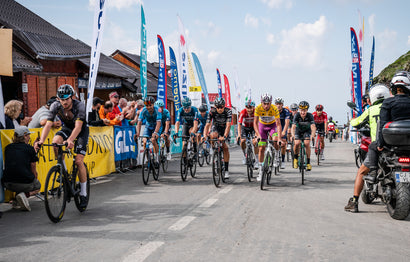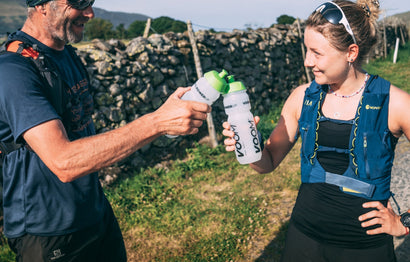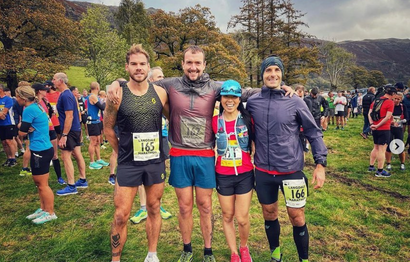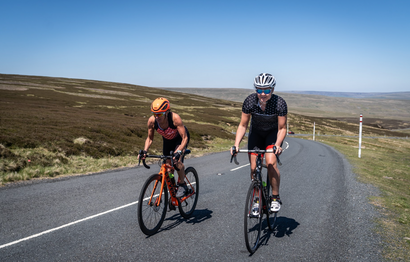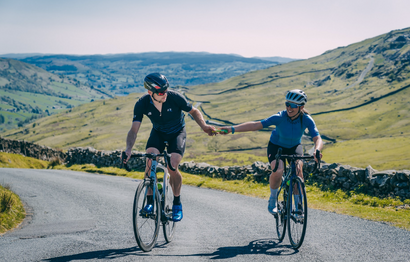Creating an effective nutrition plan for a coast to coast cycling event involves good planning to ensure adequate carbohydrate intake and proper hydration. Let’s take a look at things to consider and how you can nail your nutrition, incorporating some products from the VOOM Nutrition range.

Pre-Ride Meal (3-4 hours before the event)
Aim to get a carbohydrate rich breakfast such as porridge. This provides a solid base with slow-release carbohydrates. You may like to include a banana, a handful of raisins or other dried fruits and a spoon of honey. It's also well worth sipping on a 500ml serving of electrolyte drink to hit the start line optimally hydrated - so many riders actually get to the start line dehydrated and therefore on the back foot.

Nutrition during the ride
Carbohydrate Intake
Research repeatedly supports a recommendation to consume 60-90 grams of carbohydrates per hour for endurance events lasting upwards of 3hours. If the ride is at a more leisurely pace 30-60g per hour may be adequate, whereas for those pushing the intensity, and therefore burning glycogen more quickly, closer to 90g per hour would be recommended.

The total duration of riding, which you can calculated based on your predicted average speed, will obviously determine just how many grams of carbs you should aim to take on board throughout the ride. Taking on insufficient, or no carbs at all, can lead to a dramatic reduction in performance as the body must turn to its fat reserves, which is a slower way of delivering useable energy to the muscles.
As mentioned, for most riders 60g of carbohydrates per hour is a good ‘ball-park’ figure to aim for and there are various ways of hitting this target, be it drinks, energy bars, gels or real food options. Perhaps the easiest and most convenient way is with a high carbohydrate drink in your bottle.
VOOM Fusion Fuel contains 90g of carbs in one serving which can be mixed in a 500 or 750ml bottle. The unique tri-carb blend contains an optimal ratio of carbs to speed up stomach emptying, subsequent absorption and utilisation of carbs to power the working muscles. Alongside the carbohydrates the drink also contains electrolytes and amino acids to maintain hydration and fluid balance, avoid cramp and fight fatigue.

One serving of Fusion Fuel, with 90g of carbohydrates, can therefore be sipped on across 60 to 90 minutes, or even two hours, depending on your aim for carb intake. As an example, if you set off with 2 x 750ml bottles of Fusion Fuel, and use 1 bottle every 90 minutes, the first 3 hours of riding is completely covered! If you’re aiming for more than 60g, or using less carbohydrate drink this can be supplemented with other carbohydrate-rich ‘real foods’ such as Bananas, flap jacks, cereal bars or even sandwiches.

Energy bars or gels are another convenient carbohydrate source, with fast acting carbs that can easily be absorbed into the body. The VOOM Pocket Rocket range, offers twice the energy of a gel in one bar, with an impressive 45g of carbohydrates. Stomach comfort is improved by both the convenient portionability, allowing you to consume carbs little and often, and the method of delivery which reduced how much glucose reaches the stomach.
The melt in the mouth texture of the bar requires a little bit of chewing to break it up, meaning some of the glucose can be absorbed directly into the blood stream through the gums, working even more quickly than an energy gel. Each Pocket Rocket contains four pieces, so one piece every 15 minutes or so should give you a consistent supply of glucose, and a couple of other little snacks and you can hit 60g of carbohydrates per hour.

The Pocket Rocket range also contains the Caffeine Kick variant, available in berry or pink grapefruit. With 175mg of caffeine which is proven to fight fatigue and give a mental and physical boost if you’re tiring towards the end of the day. Again, the four block design of the bar means you can dose the caffeine intake as and when needed.
The final carbohydrate source we’d recommend from the VOOM range is the Powr Plant bar; these bars contain 28g of carbs, combining faster acting carbs from fruit and longer chain carbs from oats which give a sustained release of energy. The bars combine this energy with the benefits of beetroot for improving blood flow and boosting performance.

Its great to have a target for your carbohydrate intake, and its definitely worth practising in training to see how it feels to consume those quantities, and how your body responds. However, if on event day you fall slightly behind your hourly carb target, don't worry as you'll probably replace any missed carbs with the extra snacks you're likely to graze on at the aid stations.
Hydration to Chase the Sun
Hydration is crucial for maintaining performance and avoiding cramps, and with the timing of the event the conditions are likely to be warm, which further challenges the body’s hydration status. Throughout the course of the day the body loses fluid through both breathing and sweating which must be replaced to avoid dehydration. Aim to consume around 500-750ml of fluids per hour, depending on sweat rate and temperature. In particularly hot conditions you may need more than 750ml per hour, and in extreme circumstances the body can lose up to 2 litres of fluid per hour!

Dehydration can significantly reduce performance; studies have shown dehydration of just 2% can impair cognitive and physical performance by up to 20%. In a sports nutrition context dehydration also has the affect of reducing the speed of absorption from the stomach and small intestines, meaning the energy and carbohydrates we consume take longer to reach the working muscles where the energy is needed!
Specifically for an endurance cycling event, when it comes to hydration, water alone is not usually enough. That’s because in an attempt to cool the body, we increase our sweat rate. As well as fluid sweat also contains salts which means the body starts to deplete in electrolytes. These salts, namely sodium, potassium, magnesium, chloride and calcium, are important for both fluid balance and nervous function, helping your muscles contract efficiently to push those pedals!

An electrolyte drink helps replace these lost electrolytes which in turn helps the body absorb water more quickly, maintain fluid balance and avoid cramp. Conversely, if you start to dehydrate and then consume purely water, the body recognises that electrolytes in the body are becoming less concentrated, and to avoid diluting them further, the body slows the rate of water absorption, passing more of that liquid as urine. The result? Drinking an electrolyte drink hydrates you more quickly and more fully, and at the same time reduces the number of road-side pit stops!
What should I drink during an endurance cycling event?
Alongside an impressive carbohydrate content, VOOM Fusion Fuel contains a balanced, full-spectrum electrolyte formula to support hydration. This means all five key electrolytes are balanced to closely match the ratio of electrolytes lost in sweat and one serving contains just over 500mg of sodium, often considered to be the most important electrolyte to replace.
For this reason we'd recommend one 93g serving of Fusion Fuel every 1-2 hours, depending on your plan for carb intake. By incorporating VOOM Fusion Fuel into your nutrition strategy, you can effectively manage your energy levels, stay hydrated, and maintain electrolyte balance, all of which are crucial for peak performance
If your nutrition strategy doesn’t involve an energy drink containing electrolytes, use VOOM Hydrate Smart electrolyte drink to ensure you’re not just hydrating but also replenishing electrolytes lost through sweat. We recommend 1 – 2 servings, equating to 500-1000ml, every hour for optimal hydration. Hydrate Smart formula will also be available on selected aid stations at the event. With two bottle cages on the bike you can also alternate between water and carb or electrolyte drinks if preferred, to maintain balance.
By following these guidelines and using the recommended VOOM Nutrition products, you can maintain energy levels and hydration, enhancing your performance throughout the event. Adjust quantities based on personal tolerance and preferences and wherever possible test out your strategy in your training before the event.
Chase The Sun Nutrition & Hydration - A Worked Example
The following is an example fueling plan for a 12 hour Coast to Coast Cycle. Whilst there's a strong foundation of VOOM products underpinning it, there's the reality of enjoying your day out on the bike, and making a couple of stops at small shops or petrol stations you pass on the way! A Mars a day...
Hours 1 - 3: Start with 2 x 750ml Bottles with 2 servings of Fusion Fuel (2 x 90g carbs). Sip on these gradually across the first 3 hours.
Take a quick stop at a shop or petrol station for more water after around 3 hours.

Hours 4 - 6: 2 x 750ml bottles, one water, one to mix a sachet of Fusion (90g), sip through these at a roughly equal rate across the 3 hours. 1 Medium banana (27g) 1.5 x Pocket Rocket bars (67g), one piece every 30mins or so.
Lunch stop: Chicken sandwich (48g), slice of cake (50g), Cup of tea to drink (extra 300ml fluid).
Hours 7-8: 2 x 750ml bottles, 1 water, 1 Fusion (90g), 1 Pocket Rocket (45g) spread throughout the 2 hours.
Hour 9 - Garage stop for another 500ml water, Half a Pocket Rocket (22g), 1 Brunch Bar (21g).
Afternoon Stop: Medium bowl pasta (40g), half a banana (13g). Glass of squash (300ml extra liquid).

Hours 10 - 12: 2 x 750ml bottles, one fusion (90g), one water, again sip on these evenly. , 1 Powr Plant Raspberry & Beetroot bar (28g) recommended to be eaten half a bar at a time.
Final shop/garage stop for 500ml water after around 11hours, can of coke (35g) with 330ml extra fluid and mars bar (36g) to get you through the final hour - enjoy!
Total carbs = 731g during riding and another 151 from lunch and afternoon tops giving a total carb intake of 882g over the 12 hours, averaging at a nice 73.5g per hour!
Total fluid = 7,930ml, including drinks at the two stops, averaging at 660ml per hour across the 12 hour day.
This would mean that along side the two meal stops and the garage stop goodies, you'd need:
- 5 sachets of VOOM Fusion Fuel (2 to start with and 3 to top up on the go).
- 3 VOOM Pocket Rocket bars,
- 1 VOOM Powr Plant bar,
- 1 Banana
- 1 Brunch Bar

